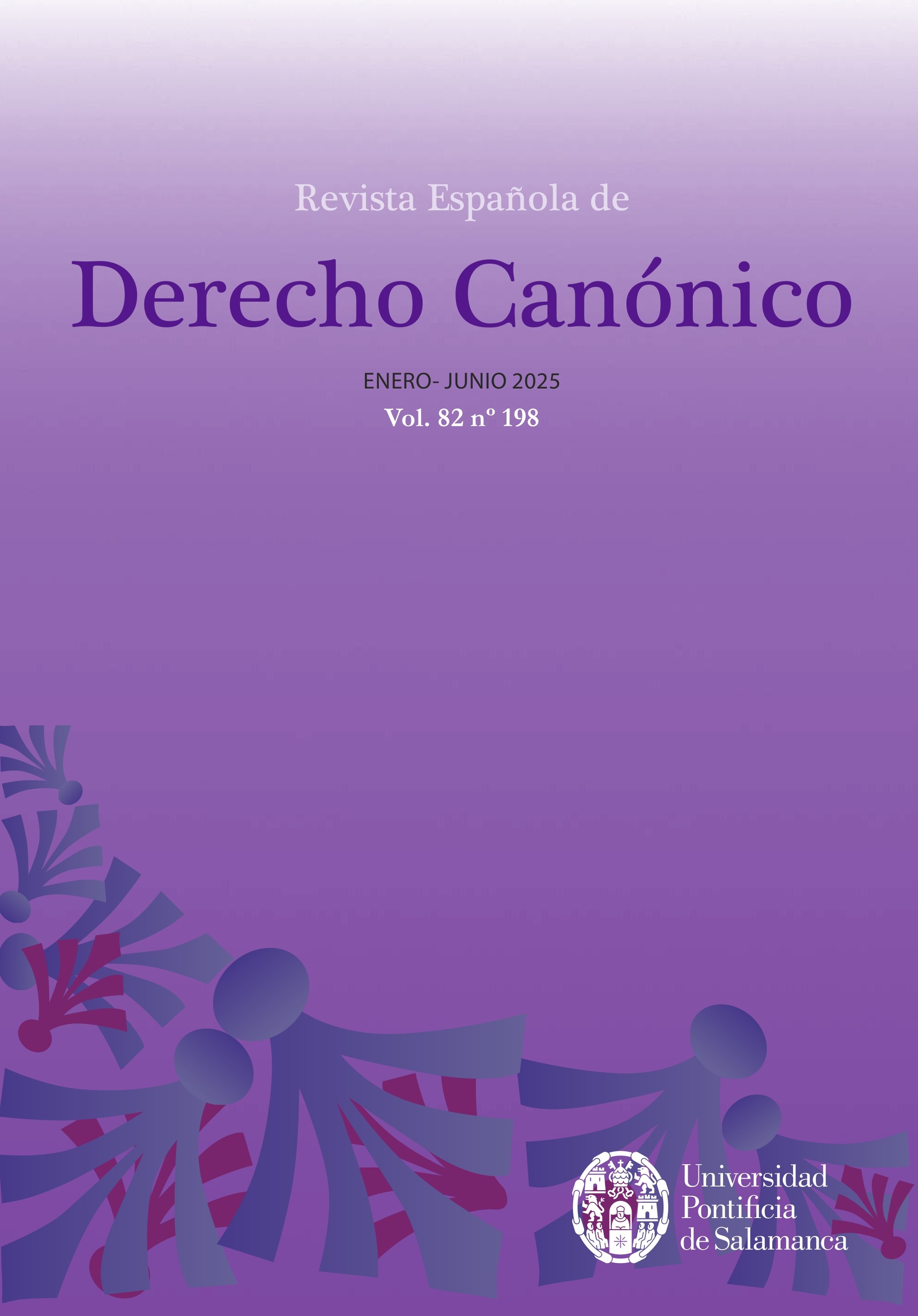Reutilización adaptativa de edificios del patrimonio religioso. Un caso de estudio de un convento del siglo XVI en Miranda de Ebro.
Contenido principal del artículo
La reutilización adaptativa de edificios del patrimonio eclesiástico se hace cada vez más necesaria a medida que las instituciones religiosas se enfrentan a la disminución de vocaciones, las limitaciones económicas y los cambios en los roles sociales. Este estudio examina la reutilización adaptativa de un convento del siglo XVI en Miranda de Ebro, España, utilizando un modelo de evaluación validado y adaptado a los edificios del patrimonio religioso. El proceso de reutilización adaptativa implica la transformación de espacios sagrados en lugares con nuevas funciones, preservando al mismo tiempo su significado arquitectónico, histórico y cultural. En España, donde la Iglesia Católica gestiona aproximadamente el 80% de los sitios patrimoniales protegidos, este tipo de intervenciones son urgentes y complejas. El estudio analiza los factores económicos, sociales, culturales y eclesiásticos que influyen en la viabilidad y sostenibilidad de las iniciativas de la reutilización. Los principales beneficios de la reutilización adaptativa incluyen la sostenibilidad ambiental, la revitalización económica y la participación comunitaria, sin embargo los edificios religiosos presentan desafíos únicos debido a su simbología espiritual, protección legal y gestión institucional. Los hallazgos indican que una función híbrida cívico-cultural representa la opción de reutilización más viable y respetuosa para el convento. El artículo concluye con recomendaciones de políticas para apoyar una reutilizacion sensible culturalmente y fortalecer la cooperación entre la Iglesia y las autoridades. Este estudio contribuye al avance de las metodologías de reutilización adaptativa y ofrece un marco replicable para académicos y profesionales que abordan la reurbanización del patrimonio eclesiástico.
Detalles del artículo
Cómo citar
Citas
AIGWI, I. E. – EGBELAKIN, T. - INGHAM, J. - PHIPPS, R., A performance-based adaptive reuse framework for underutilised historical buildings, in: Cities, 82 (2018) 1–14, https://doi.org/10.1108/ijbpa-01-2018-0007.
AMATO, A. – ANDREOLI, M. – ROVAI, M., Adaptive Reuse of a Historic Building by Introducing New Functions: A Scenario Evaluation Based on Participatory MCA Applied to a Former Carthusian Monastery in Tuscany, Italy, in: Sustainability, 13/4 (2021), art. 4, https://doi.org/10.3390/su13042335.
ARFA, F. H. – LUBELLI, B. – ZIJLSTRA, H. – QUIST, W., Criteria of “Effectiveness” and Related Aspects in Adaptive Reuse Projects of Heritage Buildings, in: Sustainability, 14/3 (2022), art. 3, https://doi.org/10.3390/su14031251.
ARFA. F. H. - ZIJLSTRA H. – LUBELLI, B. – QUIST, W., Adaptive Reuse of Heritage Buildings: From a Literature Review to a Model of Practice, in: The Historic Environment: Policy & Practice, 13 (2022) 1–23, https://doi.org/10.1080/17567505.2022.2058551.
BAXTER, P. - JACK, S., Qualitative Case Study Methodology: Study Design and Implementation for Novice Researchers, in: The Qualitative Report, 13/4 (2008) 544–559, https://doi.org/10.46743/2160-3715/2008.1573.
BULLEN, P. A. – LOVE, P. E. D., Factors influencing the adaptive re-use of buildings, in: Journal of Engineering, Design and Technology, 9/1 (2011) 32–46, https://doi.org/10.1108/17260531111121459.
DE GREGORIO, S. - DE VITA, M. - BERARDINIS, P. - PALMERO, L.; RISDONNE, A., Designing the Sustainable Adaptive Reuse of Industrial Heritage to Enhance the Local Context, in: Sustainability, 12 (2020) 9059, https://doi.org/10.3390/su12219059.
DEDEU, R., Bienes Culturales de la Iglesia, patrimonio de todos. [online] [ref. 11 April 2019]: https://gabeirasyasociados.com/bienes-culturales-de-la-iglesia-patrimonio-de-todos/.
DIMODUGNO, D., New Perspectives For The Reuse Of Catholic Churches In Europe: From A Common Problem To A Common Good. . [online] [ref. 1 January 2023]: https://iris.unito.it/handle/2318/1906571.
DYSON, K. - MATTHEWS, J. - LOVE, P. E. D., Critical success factors of adapting heritage buildings: An exploratory study, in: Built Environment Project and Asset Management, 6/1 (2016) 44–57, https://doi.org/10.1108/BEPAM-01-2015-0002.
FLYVBJERG, B., Five misunderstandings about case-study research, in: Qualitative Inquiry, 12/2 (2006) 219–245, https://doi.org/10.1177/1077800405284363.
FUTURE OF RELIGIOUS HERITAGE, Report 2010–2012 (ref. 2012) https://www.frh-europe.org/cms/wp-content/uploads/2018/01/2010-2012-FRH-Activity-report-and-financial-statement.pdf.
ITARD, L. - KLUNDER, G., Comparing environmental impacts of renovated housing stock with new construction, in: Building Research and Information, 35/3 (2007) 252–267.
JENSEN, P. A. - MASLESA, E., Value based building renovation – A tool for decision-making and evaluation, in: Building and Environment, 92 (2015) 1–9, https://doi.org/10.1016/j.buildenv.2015.04.008.
LANGSTON, C. - WONG, F. K. W. - HUI, E. C. M. - SHEN, L. Y., Strategic assessment of building adaptive reuse opportunities in Hong Kong, in: Building and Environment, 43/10 (2008) 1709–1718, https://doi.org/10.1016/j.buildenv.2007.10.017.
LANZ, F. - PENDLEBURY, J., Adaptive reuse: A critical review, in: The Journal of Architecture, 27/2–3 (2022) 441–462, https://doi.org/10.1080/13602365.2022.2105381.
LONGHI, A., Redundant religious heritage: From burdensome legacy to plentiful resource, 2023.
MERT, Y., Contribution to sustainable development: Re-development of post-mining brownfields, in: Journal of Cleaner Production, 240 (2019) 118212, https://doi.org/10.1016/j.jclepro.2019.118212.
MISIRLISOY, D. - GÜNÇE, K., Adaptive reuse strategies for heritage buildings: A holistic approach, in: Sustainable Cities and Society, 26 (2016) 91–98, https://doi.org/10.1016/j.scs.2016.05.017.
PLEVOETS, B. - CLEEMPOEL, K. V., Adaptive Reuse of the Built Heritage: Concepts and Cases of an Emerging Discipline, London: Routledge, 2019.
PONTIFICIUM CONSILIUM DE CULTURA, Decommissioning and ecclesial reuse of churches. [online] [ref. 17 December 2018]: http://www.cultura.va/content/dam/cultura/docs/pdf/beniculturali/guidelines.pdf.
REMØY, H. - VAN DER VOORDT, T., Adaptive reuse of office buildings into housing: Opportunities and risks, in: Building Research & Information, 42/3 (2014) 381–390, https://doi.org/10.1080/09613218.2014.865922.
SEDOVA, A., Impact analysis on adaptive reuse of obsolete ecclesiastical cultural heritage, in: European Journal of Cultural Management and Policy, 12 (2022) 11083, https://doi.org/10.3389/ejcmp.2022.11083.
SING, M. C. P. - LOVE, P. E. D. - LIU, H. J., Rehabilitation of existing building stock: A system dynamics model to support policy development, in: Cities, 87 (2019) 142–152, https://doi.org/10.1016/j.cities.2018.09.018.
VAN DER MEULEN, M., Interior conversions: Redesigning the Village Church for Adaptive Reuse, in: IN_BO. Ricerche e Progetti per Il Territorio, La Città e l’architettura, 8/11 (2017), art. 11, https://doi.org/10.6092/issn.2036-1602/6353.

